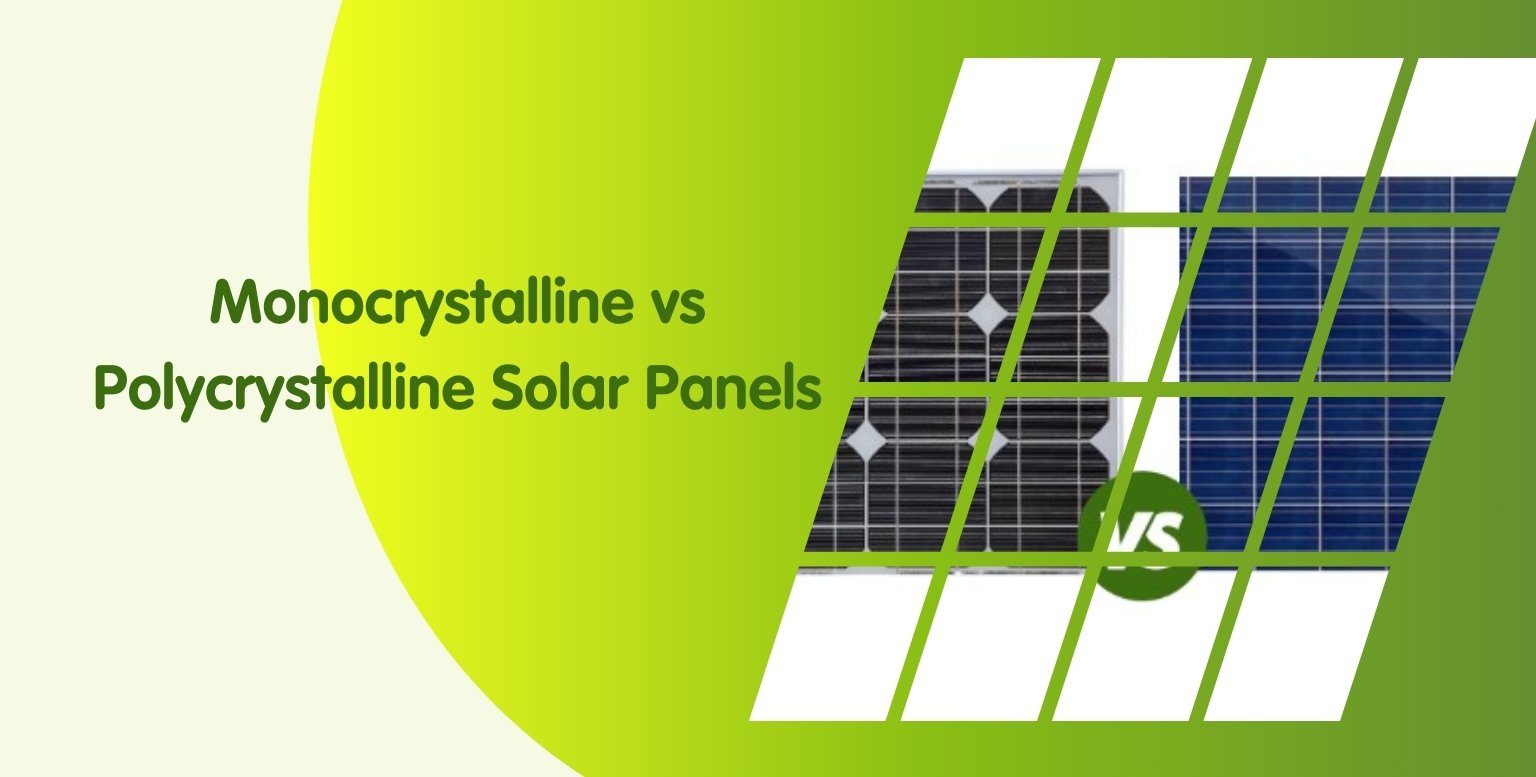Your basket is currently empty!
Written by
Monocrystalline vs Polycrystalline Solar Panels: UK Guide

Choosing residential solar panels in the UK means deciding between monocrystalline and polycrystalline.
Monocrystalline panels are more efficient (18–24%) and last longer (30–40 years). Polycrystalline panels cost less and have 13–16% efficiency. Your choice depends on roof space, budget, and energy needs.
What Are Solar Panels Made Of?
Solar panels contain photovoltaic (PV) cells—silicon units that convert sunlight into electricity. Monocrystalline panels are made from a single silicon crystal, while polycrystalline panels use multiple silicon crystals fused together.
What Are Monocrystalline Solar Panels?
Monocrystalline panels have higher efficiency thanks to their single crystal silicon structure. They produce more energy in less space, making them ideal for UK homes with limited roof room. Their sleek black appearance also enhances property aesthetics.
What Are Polycrystalline Solar Panels?
Polycrystalline panels, made from fused silicon crystals, have a blue-speckled look and a lower efficiency range of 13–16%. They’re more affordable, with a typical lifespan of around 25 years, and are suitable where roof space is ample.
Are Solar Panels Worth It for UK Homes?
Absolutely. A typical home solar installation of 4kW in the UK can generate enough electricity to significantly cut bills. The payback period usually spans 6–10 years, boosted by government incentives and FIT payments.
What’s the Difference in Cost?
Expect around £1.00–£1.50 per watt for monocrystalline and £0.75–£1.00 per watt for polycrystalline panels (fully fitted). Total costs generally range from £6,000 to £8,000 for monocrystalline and £5,000 to £7,000 for poly, including installation.
Which Lasts Longer—Monocrystalline or Polycrystalline?
Lifespan estimates show monocrystalline panels often last 30–40 years, with polycrystalline around 25 years. Both are resilient in UK weather, provided they are well-installed and maintained.
How Does Temperature Affect Performance?
Monocrystalline panels have a lower temperature coefficient, meaning they handle heat better—crucial during UK summer days. Polycrystalline panels lose more efficiency as temperatures rise.
Does Panel Appearance Affect Property Value?
Yes. Monocrystalline’s black, premium finish appeals to buyers and can boost property value. Polycrystalline’s blue finish is less sleek but still functional.
What About Environmental Impact?
Both types require energy to manufacture, but they provide long-lasting renewable energy, offsetting initial impacts within a few years. Responsible disposal and recycling are key to sustainability.
How to Pick the Right Panel for Your UK Home?
- Choose monocrystalline if space is tight, aesthetics matter, or maximum efficiency is your goal.
- Opt for polycrystalline if your roof has room and you want a lower upfront cost.
Both options offer excellent energy savings and environmental benefits, tailored to your needs.
Are Other Solar Technologies Worth Considering?
Thin-film panels are lightweight but less efficient (9–15%) and need more space. Bifacial solar panels capture sunlight from both sides, increasing output but at higher cost—more suitable for larger or commercial setups.
Written by
Start Your Solar PANEL Project Today
Buy 1 get 1 FREE Solar Panels With Installation!
Solar Finance Options & Price Match Too!





